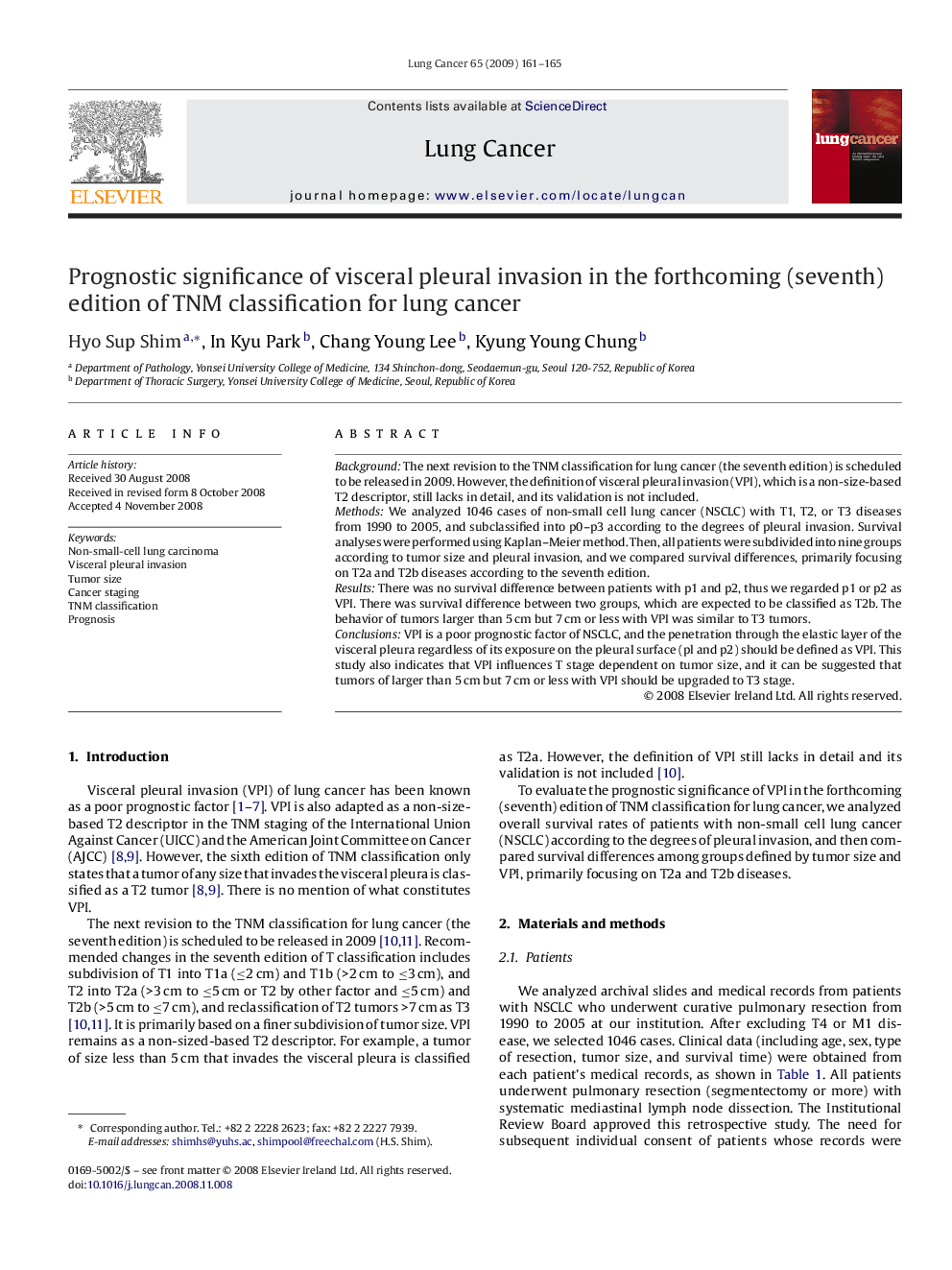| Article ID | Journal | Published Year | Pages | File Type |
|---|---|---|---|---|
| 2143182 | Lung Cancer | 2009 | 5 Pages |
BackgroundThe next revision to the TNM classification for lung cancer (the seventh edition) is scheduled to be released in 2009. However, the definition of visceral pleural invasion (VPI), which is a non-size-based T2 descriptor, still lacks in detail, and its validation is not included.MethodsWe analyzed 1046 cases of non-small cell lung cancer (NSCLC) with T1, T2, or T3 diseases from 1990 to 2005, and subclassified into p0–p3 according to the degrees of pleural invasion. Survival analyses were performed using Kaplan–Meier method. Then, all patients were subdivided into nine groups according to tumor size and pleural invasion, and we compared survival differences, primarily focusing on T2a and T2b diseases according to the seventh edition.ResultsThere was no survival difference between patients with p1 and p2, thus we regarded p1 or p2 as VPI. There was survival difference between two groups, which are expected to be classified as T2b. The behavior of tumors larger than 5 cm but 7 cm or less with VPI was similar to T3 tumors.ConclusionsVPI is a poor prognostic factor of NSCLC, and the penetration through the elastic layer of the visceral pleura regardless of its exposure on the pleural surface (pl and p2) should be defined as VPI. This study also indicates that VPI influences T stage dependent on tumor size, and it can be suggested that tumors of larger than 5 cm but 7 cm or less with VPI should be upgraded to T3 stage.
